![]()
![]()
![]()
Use LEFT and RIGHT arrow keys to navigate between flashcards;
Use UP and DOWN arrow keys to flip the card;
H to show hint;
A reads text to speech;
15 Cards in this Set
- Front
- Back
|
Approximate Dates Involved
|
3500 BCE to 30 BCE
|
|
|
Stylistic Characteristics
|
Afterlife
Canon of proportions by rank Figures: broad frontal shoulders, "profiled heads" torsos and legs: Old Kingdom- stiff stance, expression; Middle Kingdom- more relaxed figures, emotional faces; New Kingdom- round and elongated Pharaoh: left foot forward, knees, beard, headdress, kilt, necklace, young and strong, fists, thumb forward Mastabas Pyramids Rock-cut-tombs Block statues Amarna period of naturalism |
|
|
Religion
|
Pharaoh= gpd, son of Horus
Ruled by dynasties Scribes/priests = literate and educated Polytheism Monotheism- Akhnaton Queen Hatshepsut - female monarch |
|
|
The World
|
Unification of lower & Upper Egypt
Expansion of Egypt - gold/imports Trade along the Nile Social: pharaoh, priests & scribes, slaves, women Warring low during Hatshepsut and Akhenaton Hieroglyphics |
|
|
Change in the Arts
|
Akhenaton: naturalism, intimacy, Marfans disease
Afterlife Tomb raiders- change in location Power/strength of ruler |
|

|
Pyramids at Gizeh
|
|

|
Stepped Pyramid of King Djoser
|
|
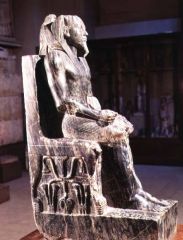
|
Khafre
|
|
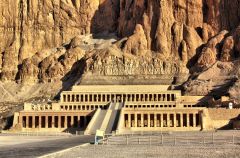
|
Temple of Hatshepsut
|
|
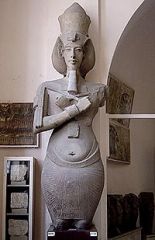
|
Statue of Akhenaton
|
|
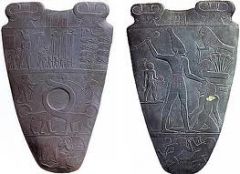
|
Palette of Narmer
|
|

|
Menkaure and his Wife
|
|
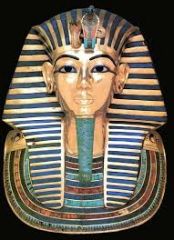
|
Portrait Mask of Tut
|
|
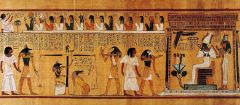
|
Judgement of Hu'Nfer
|
|
|
Architectural Style
|
Mastaba (simple tomb, sloping sides, simple entrance; body buried below-center)
Stepped pyramid (Imhotep-King Djoser) Pyramid (necropolises-preserve ka) Rock-cut tombs (Beni Hasan) Temples (Abu Simbel - pylons, gateways, enter into courtyard,; hypostyle) |

